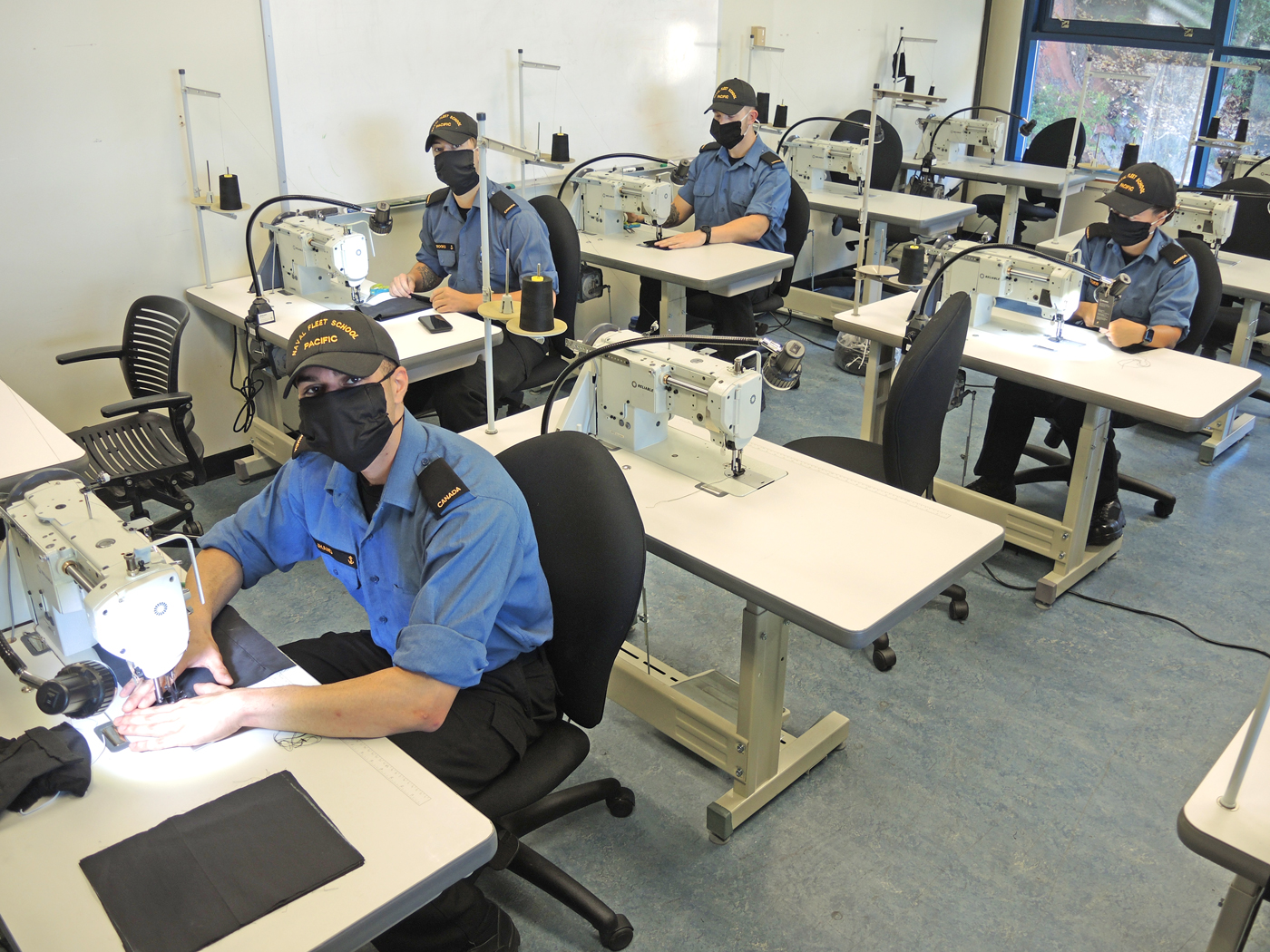Mask making challenge sewed up
By Lookout on Aug 18, 2020 with Comments 0

Members of Naval Fleet School Pacific gather for a group photograph in celebration of their 11,000 non-medical mask milestone on Aug. 14 at the Seamanship Training Centre. Photo by Peter Mallett, Lookout
Peter Mallett, Staff Writer ~
Like elves at Santa’s workshop, sailors within the Naval Fleet School (Pacific) (NFS(P)) have cut and stitched over 10,000 non-medical masks at a make-shift assembly line set up in the Seamanship Training Centre (STC).
The masks have been created and distributed to the 1,100 Esquimalt-based students, instructors, and staff that could be required to wear Personal Protective Equipment (PPE) to mitigate the spread of COVID-19.
“Using their inherent ‘bos’n’ trade skills, members applied themselves to setting up and honing the entire production process, from ordering raw materials to marking, cutting, sewing and final assembly,” said LCdr Michael Erwin, NFS(P) Seamanship Division Commander. “The result has been an amazing organization that has optimized productivity while contributing significantly to their shipmates in the Formation.”
Mask production began May 7 with a Joint Task Force Pacific Task Order that was part of the Canadian Armed Forces response to the pandemic.
Initially, PO1 Scott Colburn coordinated NFS(P)’s mask production. Then, PO2 Brett Spelliscy oversaw the production team consisting of two dozen boatswains, who were conducting training, and members from within Seamanship Division. They used electronic cutters and 16 in-house sewing machines to speed up the mask-making process. They performed their “magic” and quickly transformed large bolts of fabric purchased from area retailers into masks, says PO2 Spelliscy.
“Learning how to use a sewing machine is part of the normal training for boatswains and as per their jack-of-all trades job description, they are required to have these skills among many others when they arrive on ship,” he adds.
On average, from the start to the end of production, STC made 760 masks a week, each one taking about 10 to 15 minutes to produce.
“They came in everyday with enthusiasm to get the job done in what can easily be seen as a monotonous task making these masks over and over again,” he said. “To show that level of dedication is worthy to take note of as a good number of them are still awaiting their boatswain training. I have nothing but praise for the level of effort put forth by the men and woman who have been a part of this project at STC.”
Keeping up the production pace has become a challenge in recent weeks with the ramping up of courses at NFS(P) as part of a phased approach to training resumption.
More than 40 per cent of non-medical masks supplied to Base Logistics have been manufactured by STC and these are being stored at a Base Logistics storage facility in Dockyard to be distributed when needed.
Last week marked the end of mask production with the cancellation of Task Order 007. In the count held within Seamanship Training Centre of the number of masks made, their total stands at an impressive 11,000.
––––
Filed Under: Top Stories
About the Author:





